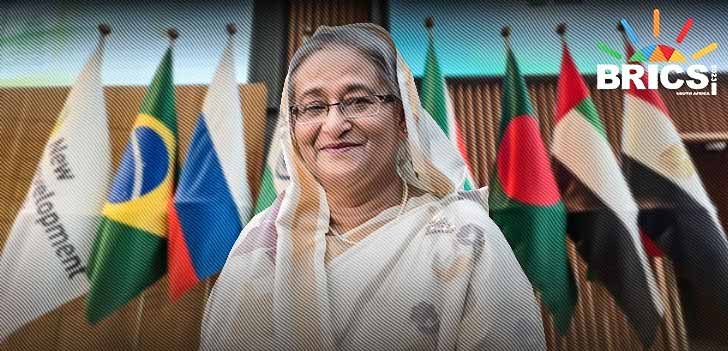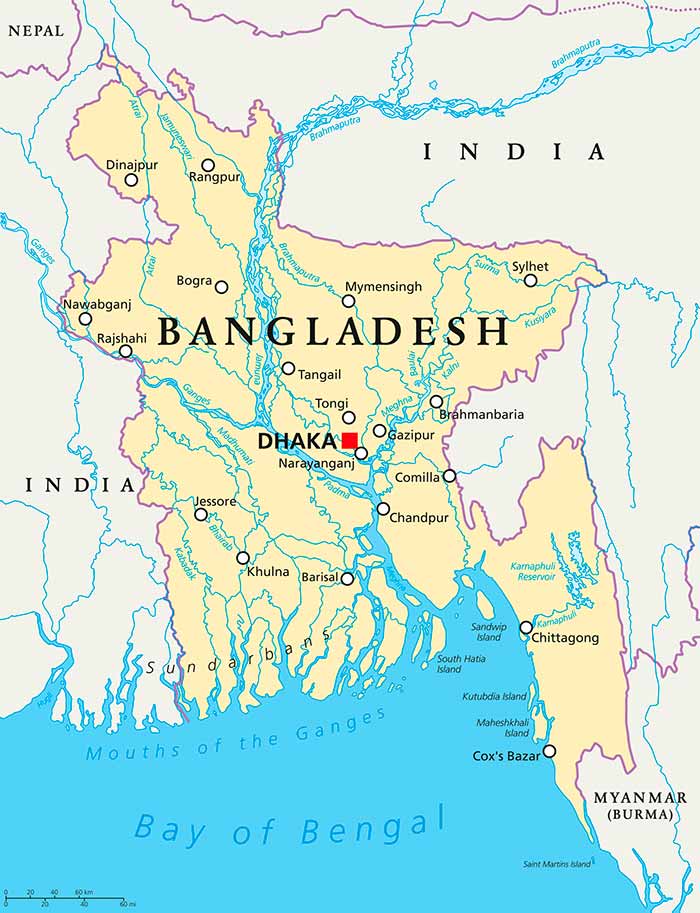Bangladesh Formally Applies To Join BRICS

Bangladesh Prime Minister Sheikh Hasina
Bangladesh has become the latest country to express interest in joining the BRICS economic group, with reports on Monday (June 19) revealing that Dhaka has sent a formal request to become a member. The issue is expected to be discussed at the BRICS summit scheduled to take place in South Africa in August.
News of Bangladesh’s expected request came through discussions held between Bangladeshi Prime Minister Sheikh Hasina and South African President Cyril Ramaphosa in Geneva last Wednesday. South Africa currently holds the BRICS Presidency. Other members include Brazil, Russia, India and China with multiple countries also holding the unofficial title ‘Friend of BRICS’. Bangladesh’s Foreign Minister AK Abdul Momen has since confirmed the move.
Over the 18 months, numerous countries have shown increased interest in joining the BRICS group, with our full overview of the countries involved here. Interest has risen amid the West’s leveraging of international financial systems against Iran and Russia, and a tariff war with China that is being seen in the wider global context of creating a culture of unreliability of Western backed trade and financial systems. Hence the development of an alternative bloc that would seek to coordinate its own systems without US or EU interference.
Russia’s deputy foreign minister, Sergey Ryabkov, stated at the recent SPIEF 2023 summit that there are currently over 20 countries that are considering joining the bloc. Arab countries such as Algeria, Egypt, Saudi Arabia, and the UAE have all expressed interest in greater ties with the group, as have Iran, Argentina, Mexico, Bahrain, Indonesia, and Nigeria.
Meanwhile, Kremlin spokesperson Dmitry Peskov suggested on Friday that the reason so many countries are interested in joining the bloc is due to the effectiveness and authority of the BRICS alliance.
“This is not the effect of Russia’s ongoing policies, it is the effect of the prospects for the development of such an integration association as BRICS,” Peskov said. He stressed that the group is “an association of countries that share a common approach aimed at developing relations based on benefit and mutual respect and not lecturing each other on how to live, on whom to rely and whom to follow.”
He also stated that new BRICS members would enrich the multipolar foundations of the group noting that decisions on accepting requests must be made by consensus among existing members.
India’s Foreign Minister, Subrahmanyam Jaishankar, also said on June 2, following a meeting of the BRICS Foreign Ministers in Cape Town that “BRICS is no longer an ‘alternative,’ it is an established feature of the global landscape. The message of reform that BRICS embodies must permeate the world of multilateralism.”
The current BRICS five now contribute 31.5% of global GDP, while the G7 share has fallen to 30%. The BRICS is expected to contribute over 50% of global GDP by 2030, with any proposed enlargement certainly to bring that forward.
Bangladesh Snap Shot

GDP: USD425.5 billion
GDP Per Capita: USD2,700
2023 Growth Rate: 5.3%
Population: 169.5 million
Bangladesh is one of the world’s top five fastest growing economies and is undergoing significant infrastructure and trade development reforms. It shares a 4,100 km border with India and a 247 km border with Myanmar and has a 720km coastline along the Bay of Bengal.

Bangladesh is going through trade reforms due to its transition out of its “Least Developed Country” status — a United Nations classification that exempts the poorest nations from tariffs on exports to developed countries. It will lose these privileges in 2026, which is ushering in new negotiations for Free Trade and similar deals. Membership of BRICS falls into that category.
Bangladesh currently has limited trade agreements with other
developing countries, but no FTAs. It is currently negotiating FTA with eleven countries, thought to include China, Egypt, India, Indonesia, Japan, Malaysia, Maldives, Pakistan, Saudi Arabia, Sri Lanka and the UAE. A BRICS deal would not include FTA status but would assist coordination of trade and other collaboration with the bloc.
Bangladesh is the world’s second-largest exporter of garments after China. These products account for 80% of its exports, however, the government is making diversification a priority. Targeted industrial sectors include food processing, digital equipment, and Bay of Bengal fisheries amongst others.
Our complimentary report “Bangladesh Trade, Development & Economic Prospects” can be downloaded here.
Dezan Shira & Associates has a partner firm in Bangladesh. For assistance, please contact bangladesh@dezshira.com
Related Reading





